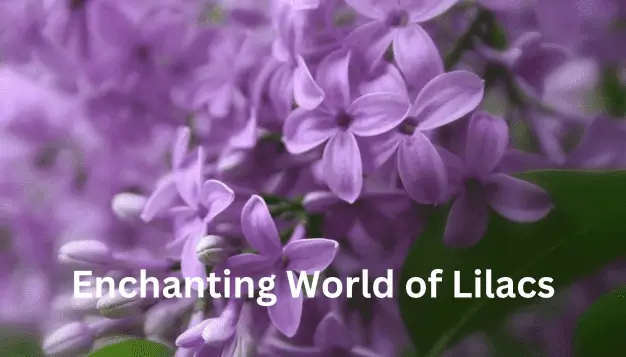Lilacs, with their intoxicating fragrance and delicate blossoms, have captured the hearts of garden enthusiasts and nature lovers alike for centuries. These enchanting shrubs, belonging to the genus Syringa, are renowned for their vibrant colors, captivating scents, and historical significance.
In this comprehensive exploration, we delve into the fascinating world of lilacs, examining their origins, varieties, cultivation, and the cultural impact that has made them a beloved symbol of beauty and renewal.
Origins and Historical Significance
Lilacs have a rich and diverse history that spans multiple continents. Originating from Southeastern Europe and Eastern Asia, these deciduous shrubs have been cultivated for centuries. The genus name “Syringa” is derived from the Greek word “syrinx,” meaning pipe or tube, alluding to the hollow stems of the plant.
The lilac’s journey westward can be traced back to the Ottoman Empire in the 16th century. It found its way to Europe through trade routes, capturing the attention of horticulturists and royalty. In France, the lilac gained particular favor with the aristocracy, eventually becoming a symbol of love and an integral part of European gardens.
Varieties and Colors
Lilacs are celebrated for their diverse range of colors, each variety offering a unique visual and olfactory experience. The most common lilac species is Syringa vulgaris, known for its shades of lavender and purple. However, lilacs can be found in an array of colors, including white, pink, magenta, blue, and even deep burgundy.
Among the popular cultivars are ‘Madame Lemoine,’ a double white-flowered lilac with a heavenly fragrance, and ‘Charles Joly,’ known for its rich, deep purple blossoms. The diversity in lilac varieties allows gardeners to create stunning landscapes with an assortment of colors and shapes, ensuring there is a lilac to suit every taste.
Cultivation and Care of Lilacs
Growing lilacs requires careful consideration of their specific needs, but with the right care, these shrubs can thrive in a variety of climates. Lilacs prefer well-drained soil and ample sunlight, making them excellent additions to gardens and landscapes.
Planting lilacs should be done in the fall or early spring, allowing the roots to establish before the growing season. Regular pruning is essential to maintain shape and encourage robust flowering. Adequate watering, especially during dry periods, is crucial for healthy growth.
Lilacs are relatively low-maintenance, but their susceptibility to certain pests and diseases, such as powdery mildew or aphids, requires vigilance. Applying organic pesticides and providing proper air circulation can help prevent and manage these issues.
Cultural Symbolism
Beyond their aesthetic appeal, lilacs hold cultural significance in various societies and have become symbolic in literature, art, and folklore. In the language of flowers, or floriography, lilacs are often associated with emotions such as love, joy, and remembrance.
In Eastern European folklore, lilacs are thought to possess protective qualities, guarding against evil spirits. In the Victorian era, sending a bouquet of lilacs conveyed the sentiment of the giver’s first emotions of love. The lilac’s presence in literature, including works by poets like Walt Whitman and Emily Dickinson, further solidifies its place in cultural symbolism.
Conclusion
Lilacs, with their alluring fragrance and captivating beauty, have etched a place in the hearts of nature enthusiasts and gardeners worldwide. From their historical journey across continents to the myriad of colors and varieties they offer, lilacs continue to be a symbol of renewal, love, and natural elegance.
Whether adorning a garden with their vibrant blooms or gracing a vase in a home, lilacs bring a touch of enchantment to any setting. As we appreciate their timeless charm, it becomes clear why lilacs have stood the test of time, maintaining their status as one of nature’s most cherished and celebrated creations.

